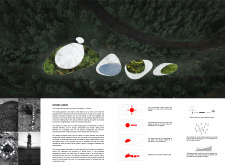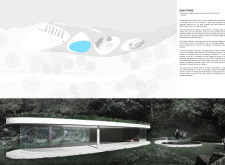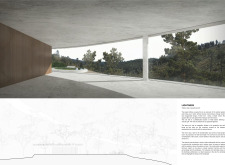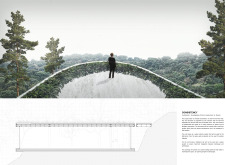5 key facts about this project
The design presents a thoughtful interaction between the building and the surrounding landscape. It is set in a tranquil area, emphasizing a connection between nature and human activity. The central concept revolves around a stone curve, guiding visitors and creating a direct link to the natural elements nearby. This design fosters a peaceful atmosphere that invites reflection and engagement.
Stone Curve
The stone curve acts as a key feature of the overall layout, providing an inviting path for visitors. This winding pathway enhances the experience as individuals approach the building. It symbolizes a connection to the environment, directing attention toward the zen garden and establishing a narrative that deepens the relationship with the site.
Zen Garden Integration
Positioned at the heart of the design, the zen garden complements the building and its natural surroundings. A circular path winds through the garden, featuring ponds and islands that create various viewpoints. These elements encourage visitors to pause and reflect, offering an opportunity for quiet contemplation. The smooth transition from interior to exterior highlights the integration of space, promoting a sense of calm and connectivity.
Organic Forms
The design utilizes curved shapes that echo the natural landscape. These forms allow the building to follow the terrain, maintaining a low profile that minimizes disruption to the views and ecosystem. By respecting the geography, the structure harmonizes with its environment, enhancing the overall visual appeal while contributing positively to the landscape.
Material Considerations
Materials used in the construction are essential to the design's intent. The extensive use of glass allows for inviting views and a strong connection to the outdoors. Krion, a durable mineral-based material, is incorporated to reflect a commitment to longevity and sustainability. The choice of metal components facilitates efficient construction processes and supports maintenance needs over time.
The architectural design features a recessed glass façade that offers clear views of the peaceful landscape, reinforcing a strong relationship between the space and the natural surroundings.






















































